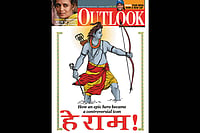The shrill slogan of the 1990s ‘Ayodhya to bas jhanki hai, Kashi-Mathura baaki hai’ (Ayodhya was only a glimpse, Kashi-Mathura will follow suit)’, was dismissed as mere rhetoric in some quarters. But the sentiment behind the cry appears to have triggered a very real domino, which brooks no stopping.
It all started with a long-standing demand for the construction of a Ram Temple at the Babri Masjid site in Ayodhya.
Then, it was the turn of religious sites linked to Krishna and Shiva, with a Hindu body claiming that the Jama Masjid in Badaun, in Uttar Pradesh, was built on the site of top of a Shiva temple.
The tide of majoritarian appeasement, fuelled by the ruling political establishment, has led to the co-option of Hindu gods in court litigations.
This, even as a crucial legislation, the Places of Worship (Special Provisions) Act, 1991, appears to have been shunned out of the legal discourse. The act was aimed at precisely maintaining the sanctity of places of worship with August 15, 1947, the date of India’s independence, as the threshold period. It also prohibits conversion of any place of worship or changing the religious character of any place from its status at the time of independence.
There are efforts now to even exempt the Gyanvapi mosque-Shringar Gauri dispute in Varanasi from the ambit of the act.
The latest flashpoint in Hubballi, where Hindu activists tried to install a Ganesh idol at the local Idgah Maidan last month, is a reminder and a warning of the toll, that the might of majoritarian frenzy might take, on country’s secular fabric.
(This appeared in the print edition as "Riders on the Storm")


























